Stephen Sparks writes and sells books, and sometimes he writes about old books, forgotten books and unread books, always with a reflective, cadenced, ever-so-slightly diffident style that charmingly frames his passion and intelligence and his amazing ability to reveal the great art in what has been passed over as merely unique and eccentric. Would that we all had readers like this. Herewith he offers an addition to our mighty list of What It’s Like Living Here essays (we have well over forty now), a psychogeographic map, as he calls it, of his San Francisco, a “cryptic alphabet” of the heart. It ends, gorgeously, with a reference to nearby Colma, where the dead outnumber the living, and the fog obscuring “what it will obscure.”
dg
.
We call it a city because it is simpler, but it is really a cities. There are as many San Franciscos as there are experiences, opinions, fantasies, dreams, glimpses, memories, understandings and misunderstandings of it. It is never just a place, always more than a geography: it is a collection of photographs, mementos, hills and wind and fog, afternoon drinks on crowded patios, and of course, bookstores.
I imagine a psychogeographic map, one that reveals in bright colors the places I frequent while the rest of the city—its eastern edge, its tangled, thickly greened heart—atrophies or diminishes into darkness. What shapes do my peregrinations take? I draw it and create a cryptic alphabet, untranslatable.
I live below the southern border of Golden Gate Park. Seated at my desk, where I spend many unproductive hours, I look into the San Francisco Botanical Gardens. The Garden’s collection includes plants from across the world—from Chile to the Mediterranean; across the street from my apartment are native Californian plants, less exotic, but, like all Californian flora to me, an eastern transplant, no less astonishing in their resilience and adaptation. There are redwoods growing here, planted a hundred years ago. From a placard placed at the entrance to the grove, I learn that redwoods can only survive within forty-five miles of the coast, where the incoming Pacific fog condenses on the needle-like leaves before falling in fat drops to the soil below. In effect, a redwood waters itself and, with its shared root system, it waters its neighbors as well.
§
Before moving here—and even now, six years later—I hadn’t thought myself much of a city person. I came here, for reasons I’ve never entirely understood, from a flat eastern seaside town popular with tourists for three months of the year and for the remainder desolate, boarded up, abandoned. In that place it was easier to self-mythologize: I lived the life of an exile, from what or where I couldn’t say, but on winter nights, when half of the streetlights were shut off and the salt-tinged wind creaked rickety signs on the boardwalk, the illusion of banishment was comforting.
In San Francisco, a city of exiles and passersby, of transients and tourists, it’s more difficult—to the point of impossibility—to conceive of myself as banished. If everyone is an exile, no one is. Even so, it’s true that I don’t entirely feel comfortable here; I’d list the usual complaints about encroaching gentrification, the Google buses, the fungal proliferation of boutiques and niche restaurants, the staggering rents, but to what end? San Francisco, a seven by seven mile squarish shape surrounded on three sides by water, can only contain so many people. For a time I’m one of them.
Maybe it’s the hesitancy of the earth here—does it want to be solid? does it want to crumble into the sea? Whatever the reason, I’ve never quite felt as rooted as those redwoods, which, I’ve learned, hold tight not by going deeper, but by being more expansive. Perhaps there’s something to be learned from them.
§
My daily commute, by bicycle, leads me through the museum concourse in Golden Gate Park. I pass the Academy of Science, with its living roof, the DeYoung Museum, with its twisted tower (the panoramic view from which never fails to impress visitors), the statue of Cervantes and his immortal duo, another statue of stately Goethe and Schiller, and come out on the north side of the park, where seven long blocks ahead I see a wall of verdant growth, the Presidio. San Francisco’s northwestern quarter is green and despite the drawbacks of living on this corner of the city (the fog, the wind, the seeming remoteness from the cultural life of the city) I feel lucky to have landed here. It feels only half-city, a compromise.
If I continue north on my bicycle after exiting the park, ignoring for a moment my obligation to turn east on Clement St., the heart of “new new Chinatown” or “new new new Chinatown,” depending on who’s labeling, to get to the labyrinthine bookstore where I earn enough of a living to scrape by, I enter the Presidio, once a landscape of windswept dunes and coastal scrub occupied seasonally by Ohlone Indians and later a military outpost for Spanish, Mexican, and finally U.S. soldiers. After a short, steep ascent—bike maps of San Francisco are color-coded to indicate the grade of the city’s multitude of hills and every cyclist quickly learns to navigate accordingly—I follow one of several winding roads further north. Just at the top of the initial climb into the Presidio is a breathtaking view, of which San Francisco has almost too many, of the Bay and Alcatraz; on my left the Goldsworthy spire points toward the heavens.
Today I want to cross the Golden Gate Bridge and so stick to the westernmost road, hugging the edge of the city, the country, the continent, coming out just below the toll plaza. Is there a psychic corollary to living on the edge like I do here, especially one as fragile as San Francisco? I remember my first experience of earthquake: things swayed, as if someone plucked a cube of Jell-O. I expected it to have been… staccato, abrupt.
So much of what I love about San Francisco is getting out of San Francisco. There is no more apt symbol of this than the Golden Gate Bridge, a ubiquitous symbol for a reason: it is a marvel. Crossing it, I inevitably think of early explorers’ inability to locate the entrance to the Bay. Its mouth seems vast as I’m buffeted by winds and chilled by swift incoming fog, but for two centuries of European exploration, it lay undiscovered, a small passageway leading to an enormous, fertile body of water that even now, plowed by container ships so large they are measured in by twenty-foot increments on their way to and from the Port of Oakland, is capable of wildness. A friend who swims in the bay—too cold for me—once collided with a seal; both man and beast came up, wide-eyed, and quickly churned wakes in opposite directions. The same friend tells stories of swimmers who get caught in strong currents and are funneled out of the bay into the vast, bone-chilling Pacific.
§
And now I too feel myself getting swept out to sea, away from San Francisco, out toward the rugged Farralon Islands and unfathomable Pacific beyond, a sea that Melville rightly describes:
There is, one knows not what sweet mystery about this sea, whose gently awful stirrings seem to speak of some hidden soul beneath; like those fabled undulations of the Ephesian sod over the buried Evangelist St. John. And meet it is, that over these sea-pastures, wide-rolling watery prairies and Potters’ Fields of all four continents, the waves should rise and fall, and ebb and flow unceasingly; for here, millions of mixed shades and shadows, drowned dreams, somnambulisms, reveries; all that we call lives and souls, lie dreaming, dreaming, still; tossing like slumberers in their beds; the ever-rolling waves but made so by their restlessness.
Resisting the pull—but Point Reyes! Mount Tamalpais! Big Sur!—I make my way back to Green Apple, where I’m surrounded five days a week by a quarter of a million books and untold volumes of dust. My San Francisco is intimately bound up with this place: it’s the hub from which my experience of the city radiates. Green Apple has only a few slits of natural light: it is designed, like the objects it contains, to focus attention inward; also like books, it is as much a passageway, leading me back out into the dazzling sunlight, wonderstruck and receptive.
§
Out again, I watch the fog rolling in—evening is coming on. I’ve never been satisfied with the verb rolling. The fog doesn’t move that way, it streaks, it seeps, it may come on little cat feet, but it stays; its tail may dreamily twitch, but its ears never prick up at the sound of movement. It settles in.
I look up when I step outside. Here, where the temperature rarely deviates to extremes and the sky, when it is blue, is a cold blue unique to this place, I always look up. The view from my window reveals the western side of Sutro Hill and the massive Sutro Tower, for many a more ubiquitous landmark than the Bridge.
Like the Bridge, Sutro Tower is a conduit, a portal: it’s a telecommunications tower, bringing the rest of the world—or that sliver of it that makes it onto television and the radio—to the city. When I wake up, I draw the curtain and look for it. Some mornings it’s there, others it’s not; sometimes it’s parts, sometimes it’s whole. Its appearance or absence guides my decisions about the day. When I crave the shelter of the fog, I stay in my neighborhood, The Sunset, feeling very much perched on a lonely edge of the world. Should I crave sunshine, I know that a fifteen-minute commute east, on the other side of that hill, will bring me to sunshine. This ability to choose one’s weather is tempting to narcissists—it can start to feel that the world was made for our moods.
§
San Francisco breeds and eludes the desire to tell. An old friend who I haven’t corresponded with much over the past few years recently implored, “Tell me about living in San Francisco.” I started to reply, describing the city and my life here, but soon found myself unable to continue. Was I overwhelmed by the task? Was it the city that stopped me or myself? How well must one live a place to become part of it?
For instance, I left unmentioned the secret stairways I go in search of—yes, there’s a guidebook, but it’s necessary to make some discoveries on my own—and, as an inveterate walker, ascend into the silence above the city. At twilight the hills are especially alluring, twinkling car lights and fiery, visually confusing sunsets competing for attention. Looking east from the top of 17th St., near Twin Peaks, I take in a vast swath of the Bay Area: from downtown San Francisco to the Bay Bridge—now strung with lights—across the Bay to Oakland, the Berkeley hills, and beyond, Mt. Diablo. (From the peak of Diablo, I once read, you can see more of the earth’s surface than from any other point except Kilimanjaro. Although I later learned this was factually untrue, I still like to believe it, and recall with wonder an afternoon I spent near its peak with M., sheltered from the wind behind an outcropping of stone. From up there we could see the across the windmill-studded Central Valley to the snow-capped Sierras, which cast a rain shadow so enormous Nevada and Utah are rendered desert, in the east; to the west, rare clear skies and the curved horizon beyond the Farallons, where the Great Whites breed.)
Even here, I’ve offered only one city, not a cities. I haven’t touched upon afternoon ferry rides to Sausalito, where, if you’re hardy enough, you can tramp up (up, up) into the Marin Headlands, never once having sat in a car; I left unmentioned the poetry room at City Lights or the shape of late afternoon shadows at Vesuvio’s, the iconic bar next door; I’ve neglected the Conservatory of Flowers; failed to elaborate on the lack of cemeteries in the city—there are only two, the rest are in Colma, where the dead outnumber the living… But then, every account is patchy. Perhaps there’s no better homage to San Francisco than to let the fog obscure what it will obscure.
— Stephen Sparks
.
Stephen Sparks (@rs_sparks) lives in San Francisco and blogs at Invisible Stories. He somewhat regularly contributes to Tin House and 3:AM Magazine.
.
.
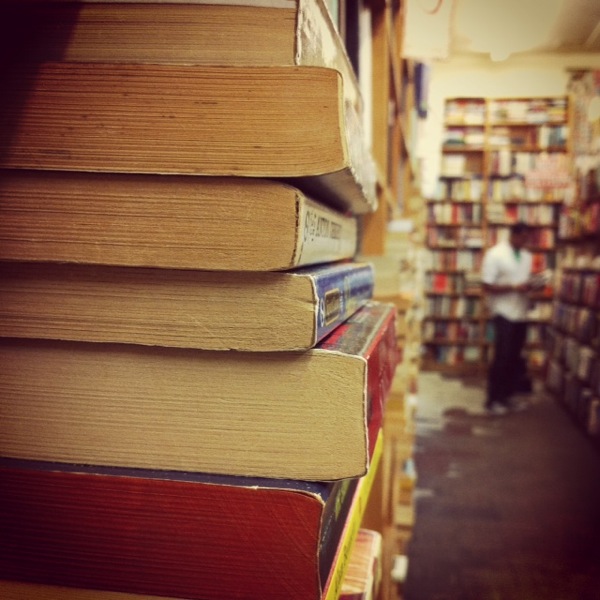
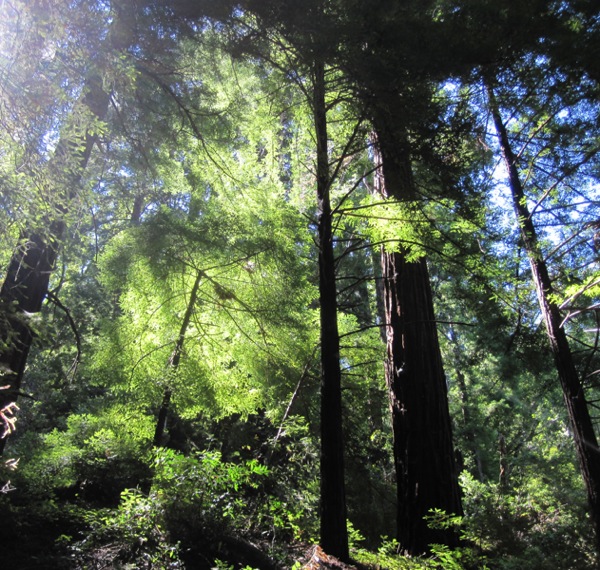
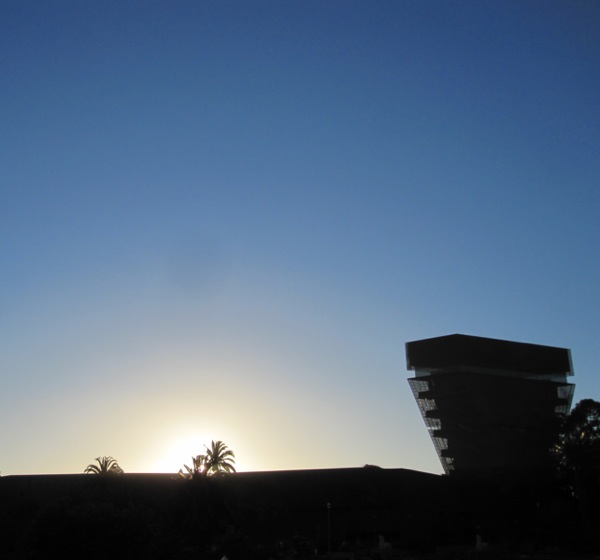

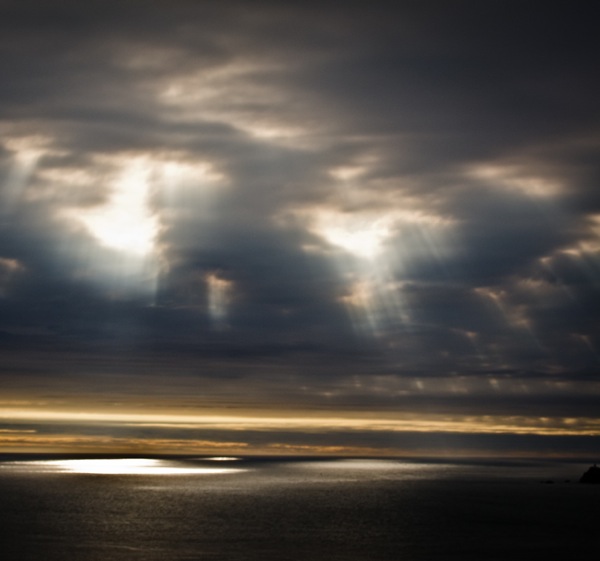

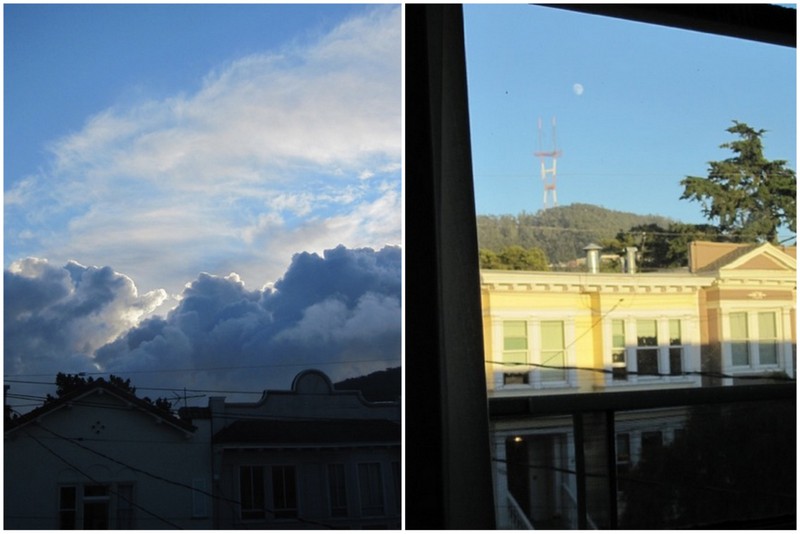


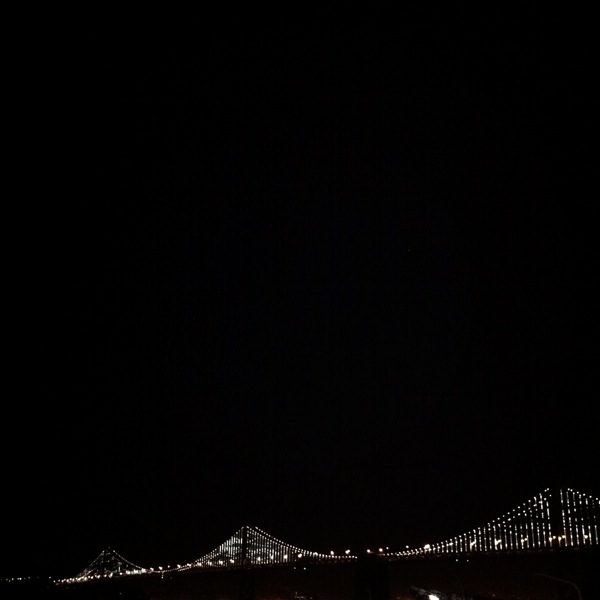
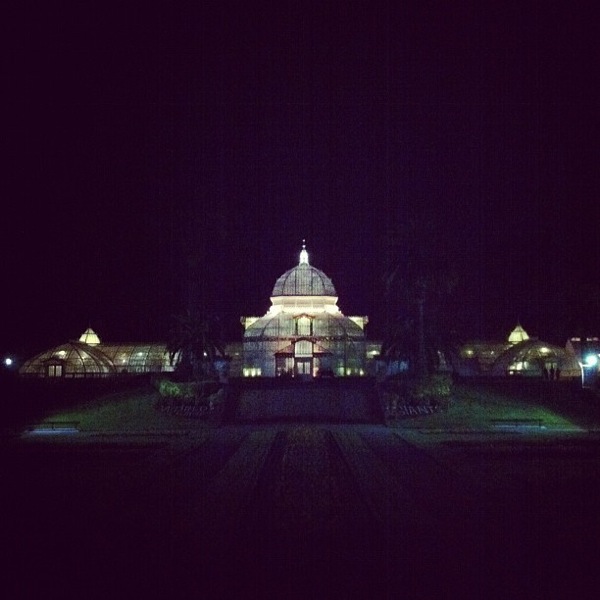
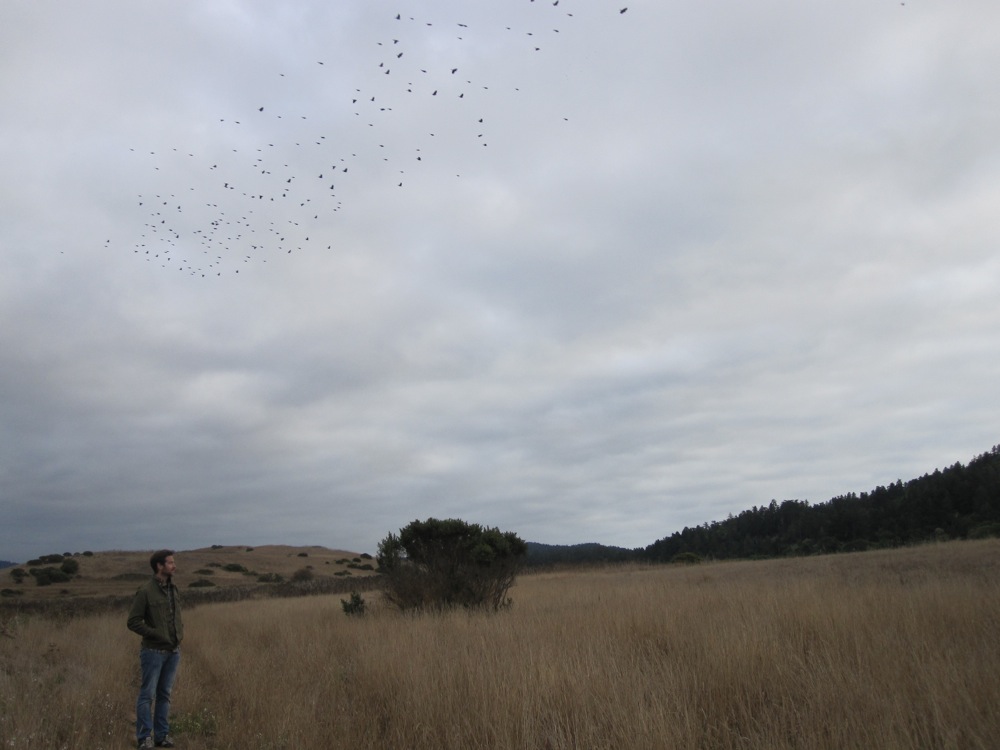
Gorgeous!
San Francisco is my favorite American city. You made me love it even more! This line is especially gorgeous, “Maybe it’s the hesitancy of the earth here—does it want to be solid? does it want to crumble into the sea?”
As a past contributor to What It’s Like Living Here’s San Francisco contingent, it was such a pleasure to read about your San Francisco, to see the city from different eyes and also notice the lenses we share. As you say, SF truly is so many different cities. I was just there for a visit, so your beautiful essay was a timely meditation on that singular place as I settle back into my life away from it. Thank you!
Beautiful, Stephen.
Loved this essay, Stephen. Beautiful writing.
Give us more, lots more, of the way you “see” things, and so creatively express them. Feeds my spirit and inspires my own imagination. Bravo!
Great eye and spirit.